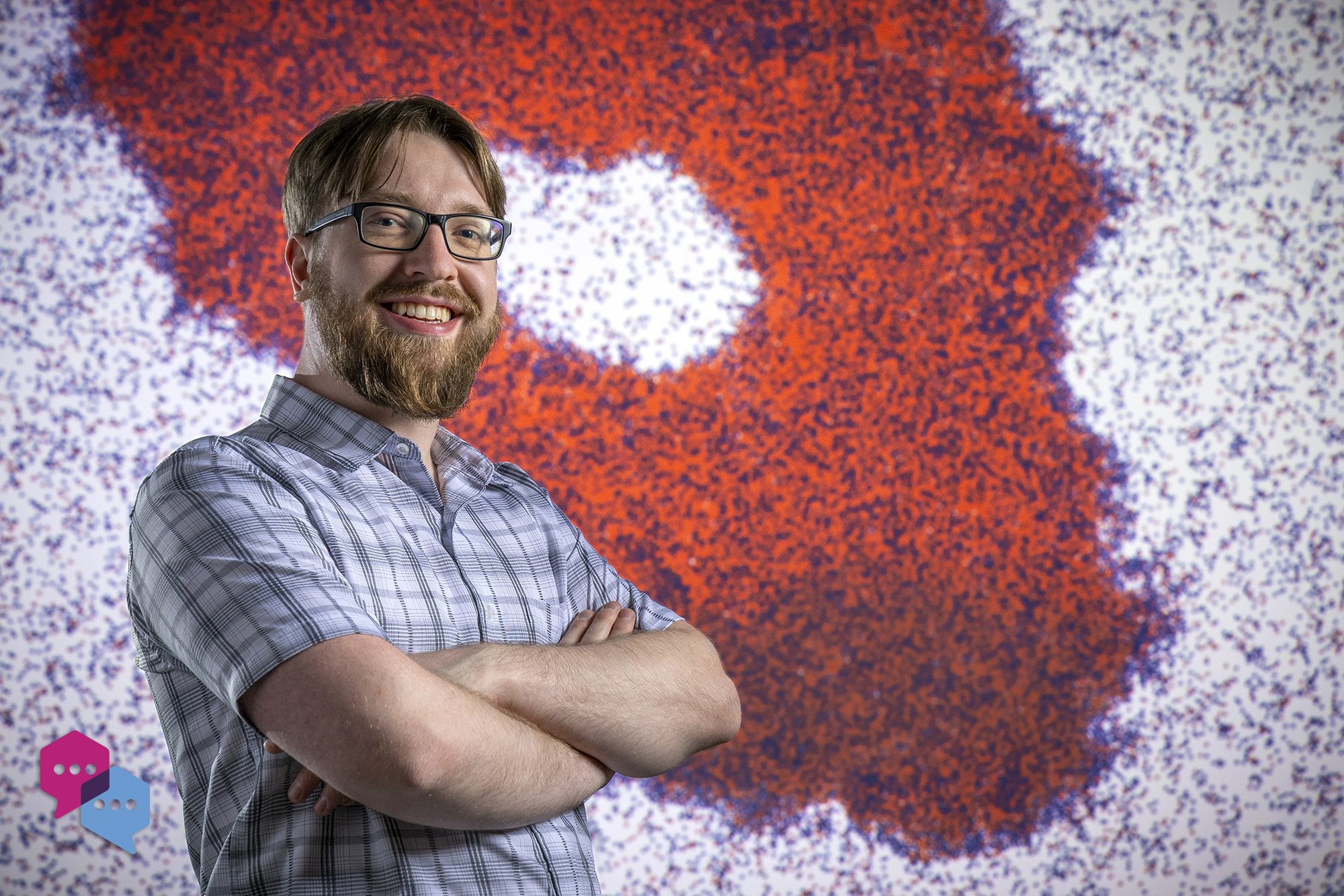Nicholas Lauersdorf is a PhD student in the Department of Applied Physical Sciences within the UNC College of Arts and Sciences. He computationally models active matter — dynamic systems made up of multiple individuals that self-propel — to design better applications that could lead to advances in managing crowds and military drone swarms.
Q: How did you discover your specific field of study?
A: In my undergraduate career, I loved computational research but wanted to see a more tangible impact. I started experimental research in graduate school, designing solar cells. I quickly learned this wasn’t for me. What I truly wanted was to delve into the fundamental physics that explains why a system behaves as we observe it.
I returned to computational physics through active matter, which are systems of many self-propelled individuals whose activity gives rise to collective behavior — walking humans form crowds, swimming fish form schools, and self-propelling particles form a dense cluster. At the time, I just wanted to go back to computational work and the field itself was secondary to me, but active matter ended up being a perfect match. Since the field is very new, the fundamental behaviors of these systems are still being discovered and understood. I fell in love with being in a fast-paced environment that both regularly adapts to new information and requires the development of novel computational tools to overcome challenges.
Q: Academics are problem-solvers. Describe a research challenge you’ve faced and how you overcame it.
A: One challenge is finding what underlying variables are responsible for the rich, emergent behavior in these systems. I study active matter mixtures where multiple species of varying speed (pictured: slow particles in blue and fast particles in red), size, shape, and interaction mechanisms are mixed together. Mixing species greatly complicates our system, requiring significant time and computational power to unwind the web of variables. I am constantly learning and applying new techniques to do this more efficiently, such as with machine learning.
In active mixtures, we observe segregation where similar species prefer to be with each other. Finding how all our variables connect is incredibly challenging without the proper tools. By developing a machine learning model, I was able to break down the many complexities of my system to reveal what gives rise to segregation.
Q: Describe your research in five words.
A: Diverse systems with rich behaviors.
Q: Who or what inspires you? Why?
A: As the geek I am, I was originally inspired to go into physics by Sheldon from “The Big Bang Theory,” transitioning from pre-med to physics as a sophomore in college. Not the brightest decision when I look at doctors’ salaries, but at least I eventually found my passion through my undergraduate research, so everything worked out well.
Q: If you could pursue any other career, what would it be and why?
A: Since the beginning of high school, I have been passionate about buying, selling, and investing in collectibles like comic books and trading cards. I love the challenge of applying my analytical skills to a different realm: business. After graduate school, I’d love to transition more into the business side of science and technology as a data scientist — but I’d also love to find a way to work at a collectibles auction house.


